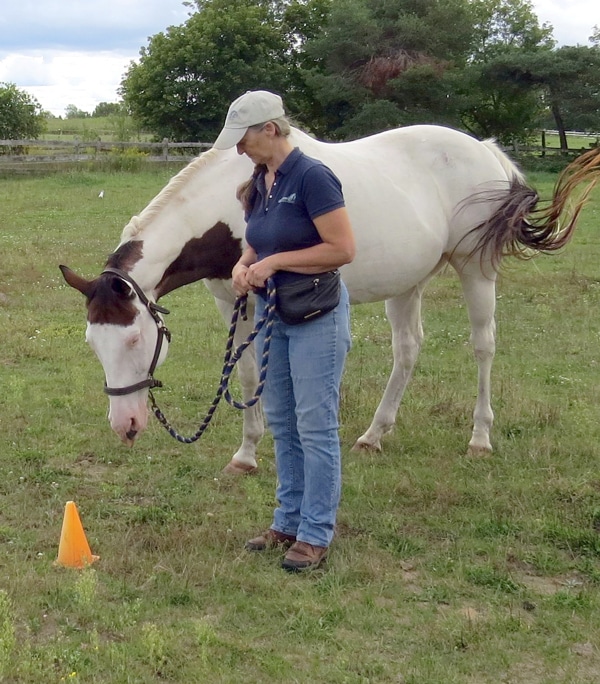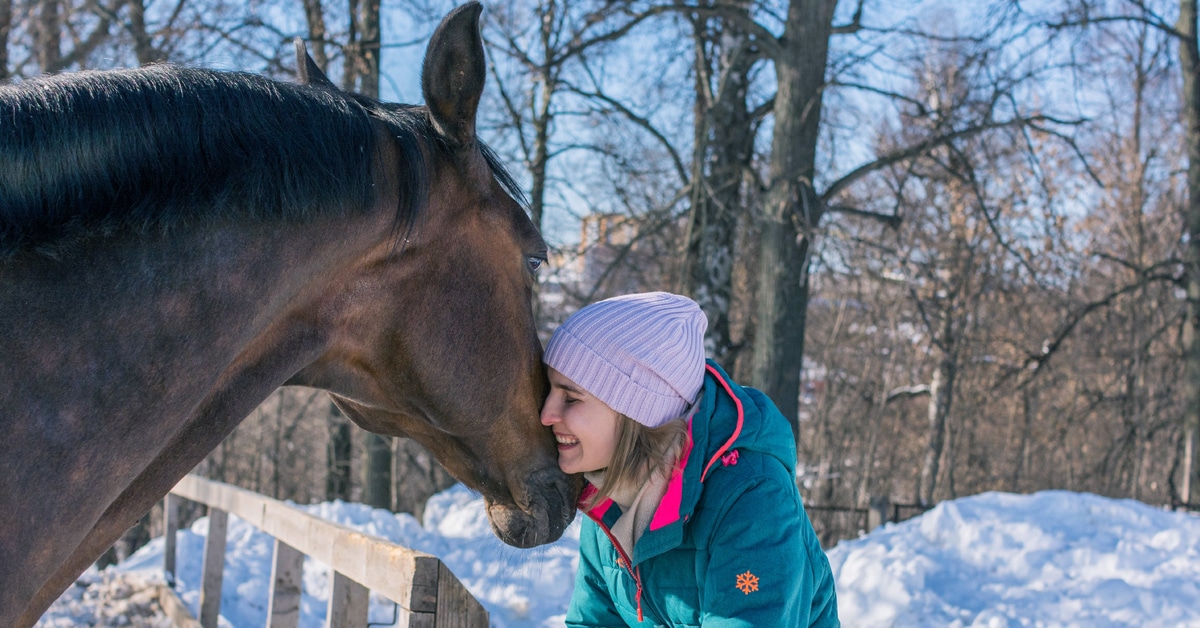Ask a question about how to build a relationship with your horse and you’ll generally get answers like:
- Be the leader
- Do more groundwork
- Make him respect you
- Teach him good ground manners
- Make him keep his attention on you
All of these suggestions focus on the human controlling the horse’s behaviour, expecting the horse to do what you want, when you want, and how you want. Do that in a relationship with another person and it’s called toxic!
Relationships can be positive or negative. It’s all about the emotional connection, how you interact with each other, and how each party feels about the other.
The foundation of a healthy relationship is the level of trust, respect, and understanding between you and your horse. So how do you build mutual trust, respect and understanding with your horse? You do it through every interaction with him, and the majority of your interactions happen from the ground:
- Turning out
- Bringing in
- Grooming
- Tacking up
- Feeding
- Handling feet
- Giving medications
- Trailer loading
- Holding for veterinarian and farrier
Where most people think of groundwork only as activities like lungeing, round pen work and ground driving, it’s important to recognize every time you’re doing something with your horse when you’re not riding is really groundwork. How you behave with and what you ask of your horse during those times affects your relationship. You build a better relationship with your horse when he feels at peace in your presence.
Interact with your horse in a way that allows him some freedom and choice, as well as being fun and interesting. It will your horse’s confidence in you, himself, and the world around him.
Relationship-Strengthening Groundwork Ideas
Liberty – You turn your horse loose in an enclosed area and give him the choice to interact with you ‒ or not. Don’t be offended if your horse chooses not to interact with you right away! The more your horse feels at peace in your company, the more your relationship will improve.
At first, simply observe your horse without expectations or asking him to do anything. As you and your horse get comfortable with this new way of being together you can introduce games or teach him fun tricks that get his mind working.
Bring in different objects. Set up simple obstacles. Introduce new things one at a time so that you don’t overwhelm him. (Check out some ideas here.)
In Hand – Take your horse for a short walk around the property or for a hike on a trail. Let him tell you where he’s interested in going ‒ and where he’d rather not go. Always stay within his comfort zone and allow him to stop and look around or investigate things.

Hide treats under a cone and let your horse figure out how to get it. He’ll use his brain to solve the puzzle. (Anne Gage photo)
Treasure Hunt – Hide treats (pieces of apples or carrots work well) around the arena. He might need some guidance at first. As he figures it out, hide treats under cones and at different levels. This fun game helps less confident horses develop curiosity and interest in the world around them.
This exercise can be done at liberty or in-hand. You can also use it as a break between practising basic walk, trot, halt, back-up training sessions. Remember to keep the focus on having fun.
Stretches – Commonly known as “carrot” stretches, these are a great way to improve your horse’s suppleness at the same time as improving your relationship. (Check out this article for details on how to safely do carrot stretches.)
Just hang out – As riders, we have been trained to always be “doing” something with our horses. I encourage you to take some time just “being” with your horse. Sit or stand outside (or inside) the paddock or arena and quietly observe and just be present.
Have a grooming-only session (providing your horse enjoys being groomed!) Find his favourite itchy spots and spend extra time on those areas.
However you’re interacting with your horse, really focus on learning more about him by paying attention to his body language (including his facial expressions) and his behaviour in different situations. This way, you’ll develop a deeper understanding of him and what he needs. When you can give your horse what he needs, he will be better prepared to give you what you want.

